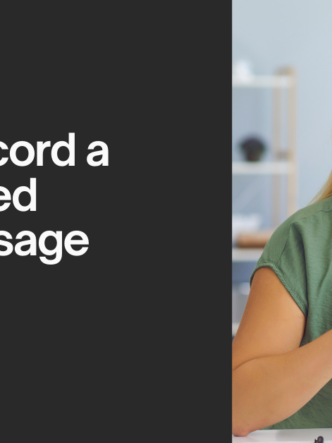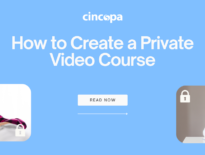
Videos have an audience reach of 92% worldwide, making them the most popular online media format consumed by audiences today. This makes video sales letters a powerful sales tool for SaaS companies who want to showcase the value of their product to potential customers.
So, what is a video sales letter (VSL)?
Video sales letters are persuasive videos that aim to capture the audience’s attention, address their pain points and objections, and offer a product as the solution.
Essentially, it’s your written sales letter in a visual format. But, unlike your written sales letter, your VSL can be enhanced with illustrations, interactive elements, animations, and any number of effects to engage audiences.
But how do you write a video sales letter? What is the structure of a VSL? Before we discuss how to do a video sales letter, let’s take a look at the benefits.
Benefits of using video sales letters
Video sales content is dominating social media platforms. And, more and more businesses are embedding video content onto their websites and landing pages. But why?
Here are the main benefits of using video sales letters.
Increase engagement with your audience
66% of customers have watched a video to learn more about a brand or product.

Image sourced from Hubspot
Video content—particularly short-form video content—is immersive and easily digestible. Its visual format makes it perfect for grabbing your audience’s attention, conveying emotions, telling stories, and showing products in action.
If social media has taught marketing and sales teams anything, it’s that video content is much more engaging than text-based content and images.
Sales videos don’t just engage social media users, either. You can place video sales letters on website homepages, landing pages, product pages, and email marketing campaigns.
Convey complex ideas with ease
If your customers’ pain points are intricate or your product’s position as a solution is complicated, getting your point across via text might confuse your audience. Videos are by far the most effective format for simplifying complex concepts and ideas.
It’s why tutorials, how-to videos, and educational videos (a.k.a. explainer videos) are among the most popular video content types at 25%.
Video sales letters are excellent vehicles for storytelling. They can use visuals and animation to convey complex pain points, challenges, and solutions, effectively removing customer objections and driving conversions.
Achieve improved SEO performance
Google’s algorithm ranks your videos. So, by optimizing your video for SEO, you can boost your search engine ranking and organic traffic, generating more views and conversions.
An SEO-optimized video matches search intent, has a keyword-rich title and description, and is indexed and accessible. And, of course, it should have high-quality sound, audio, and content.
How to craft persuasive video sales letters
How do you format a video sales letter? Let’s walk through the key steps to crafting effective video sales letters for your website, social media, emails, and ad campaigns.
Understand your audience
As with any sales pitch, your first task is to understand your audience on a deeper level. Go beyond basic demographics to understand the psychological motivations that drive your audience to buy.
What are their pain points, challenges, and objections? What are their wants and needs?
Once you have this outlined, aim to understand what type of video content your audience would like to see. Perform market research to identify the type of video content that your audience currently consumes.
Let’s say that you’re a B2C business with a huge target audience on TikTok or Instagram. Your audience might enjoy shorter, how-to-use videos that are visually stimulating and straight to the point.
But for a B2B business, in-depth video sales letters for your website’s landing pages, email campaigns, or LinkedIn might resonate more with your audience.
And then there’s format and style to consider. If your audience wants you to produce product demos or tutorials, opting for a live-action or screencast format is often the way to go. If your audience resonates more with fun, eye-catching videos, animation might boost engagement.
Chances are, you’ll need to create different types of videos for different buyer personas. You can create all types of interesting and engaging personalized videos with Cincopa’s video and image platform, so you’re spoilt for choice.

Screenshot sourced from Cincopa
Adding SaaS subscription management software to your tech stack can help you attribute revenue to specific video sales letters, so you can monitor profitability and make adjustments. Plus, you can get real-time SaaS metrics and powerful CRM integrations.
Create a compelling hook
Open your video sales letter with an attention-grabbing hook.
Your hook is the bait that reels in your audience and encourages them to continue watching. Without a compelling hook, your viewers will bounce within the first few seconds, which means they won’t convert. So, use this essential component to capture your viewers’ attention and spark their curiosity as quickly as possible.
But how?
There’s an art to creating a powerful hook. Here are a few suggestions:
- Make them laugh with a funny joke.
- Ask a thought-provoking question.
- Wow them with an interesting fact.
- Make an intriguing assertion.
- Start with words like “Imagine” or “what if”.
Address your audience’s pain points
Customers and companies buy SaaS products to solve practical problems. So, SaaS video sales letters should hone in on the pain points and challenges that your customers currently face.
The goal of this VSL section is to spotlight and agitate specific pain points so that your customers fully comprehend the scope of the problem they’re facing. In doing so, they’ll be able to see the clear and compelling value of your product.
Storytelling is a great way to indirectly address pain points. Viewers can see themselves in the story and engage with your video on a more emotional and/or empathetic level. For a more direct approach, providing your viewers with interesting statistics and facts can help authorize pain points.
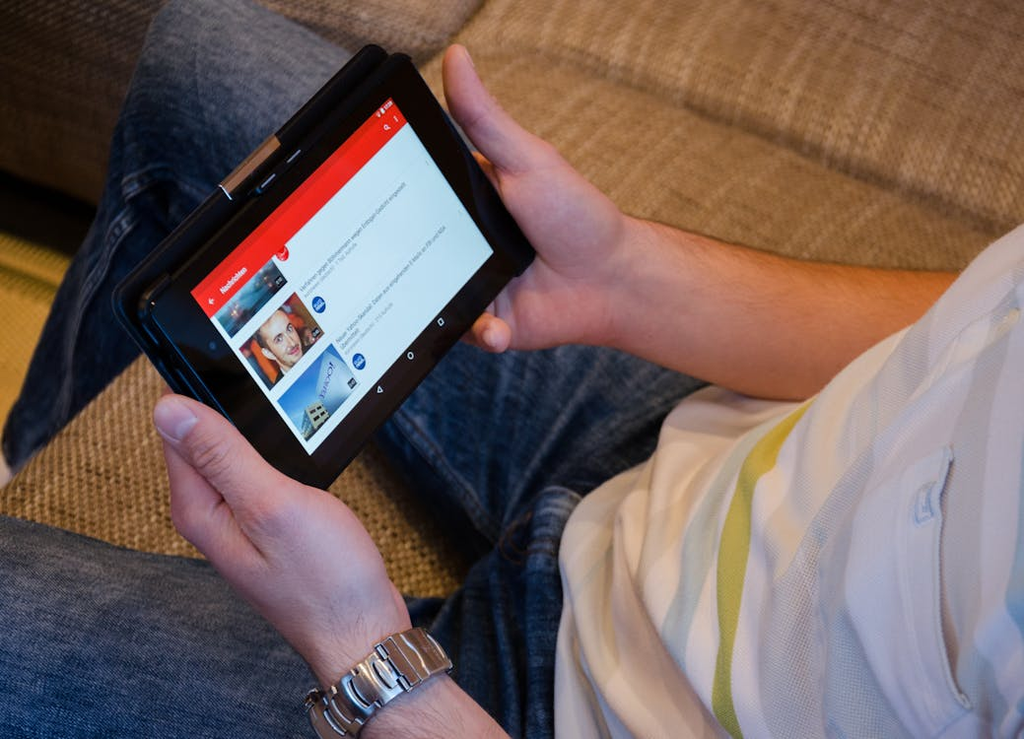
Free to use image taken from Pexels
To discover your audience’s pain points, leverage the data collected by your customer relationship management (CRM) system.
Present your product as a solution
Here’s where you can highlight your solution’s features and benefits. And, more importantly, explain how these features and benefits solve the pain points that your customer is experiencing.
Let’s say that your product is a SaaS accounting software. Your customers’ biggest pain points could be anything from financial limitations to a lack of cash flow visibility or lost revenue/productivity due to manual data entry errors.
Here, you’d identify one or two of your audiences’ most pressing pain points and communicate how specific features remove these obstacles and challenges.
Financial limitations? Your solution is more cost-effective than your competitors. Lost productivity due to errors? Your solution fully automates manual data entry tasks to eliminate input and calculation errors while boosting productivity.
Consider providing social proof in your video to back up your claims. Positive customer video testimonials, glowing reviews, before-and-after images, and impressive statistics validate your claims and instill customer trust.
Different customer segments will resonate with different pain points. So, it’s worth creating multiple short videos that focus on specific pain points (as opposed to one longer video that covers every pain point and solution).
Of course, this will require a fair bit of resource management. Use a resource management tool to make sure that you have the budget, talent, time, and other resources to effectively manage all of your separate video sales letter projects.
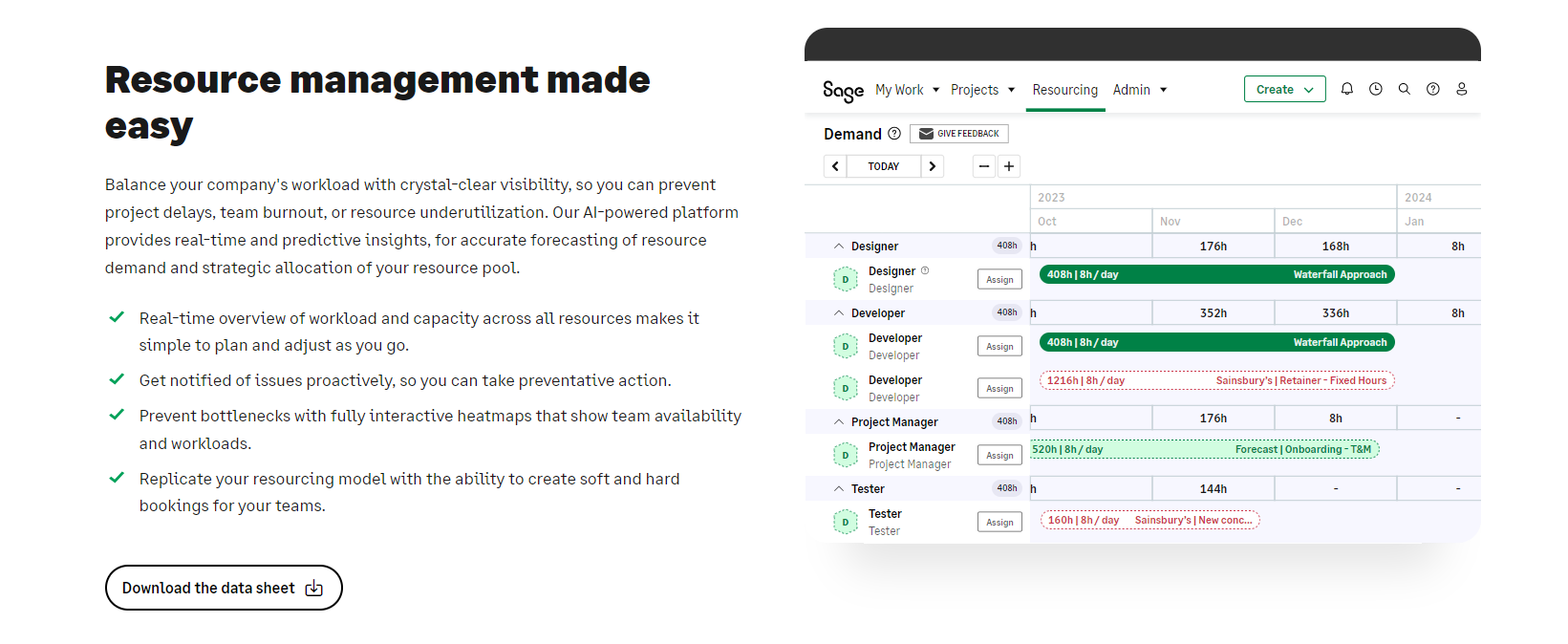
Screenshot sourced from Sage
Deliver a compelling call to action
Place a strong call-to-action (CTA) at the end of your video to drive viewers to take the desired action. This might be to make a purchase, sign up for your free trial, or try out your product demo, for example.
A strong CTA:
Uses actionable language: Use command verbs, such as “buy”, “download”, or “get” to push the viewer to take action.
Incentivizes conversion: Freebies, discounts, loyalty points, and other incentives can lure in customers who are on the fence.
Creates a sense of urgency: Time-limited offers trigger FOMO (the fear of missing out), which can push customers on the edge of converting to make that final leap.
Analyze performance to improve future content
So, you’ve crafted compelling video sales letters and placed them on your socials, email campaigns, landing pages, and more. Now, you need to make sure that they’re performing as you expect them to.
Specifically, are they driving engagement, conversions, and ROI? Or are too many viewers bouncing without converting?
Using a centralized video analytics platform, you can monitor all kinds of engagement metrics. See everything from overall watch time, unique views, and impressions, to heatmaps and drop-off rates.
You can also track engagement and conversion metrics for individual viewers as well as your overall performance. So, you can view data like customer location, device type, viewing time, and average engagement rate to gain a more intimate insight into the preferences of your different customer segments.
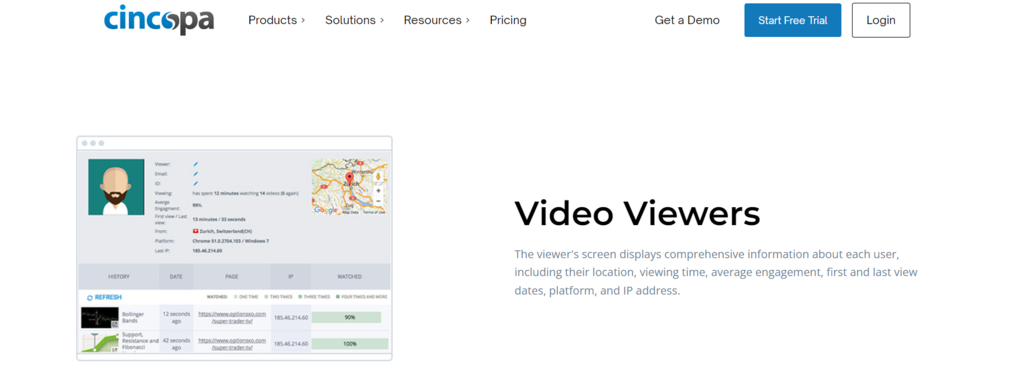
Screenshot sourced from Cincopa
The success of your current VSLs can inform your future content. If one type of video performed really well, such as a demo video, then you might invest more resources into creating similar sales videos.
If a video performs poorly, you can use analytics to figure out why. Maybe your video was too long or too short? Maybe it didn’t have an engaging hook or a strong CTA? Whatever the case, analytics give you the data you need to avoid making the same mistakes.
Key takeaways
High-quality video sales letters skyrocket SEO and engagement. With a compelling hook, excellent problem-solving product positioning, and a strong CTA, you can create a video sales letter script that puts your SaaS products on the map and drives customers to conversion.
Now that you know what makes a great VSL, are you ready to create your own? Why not get started with Cincopa?








